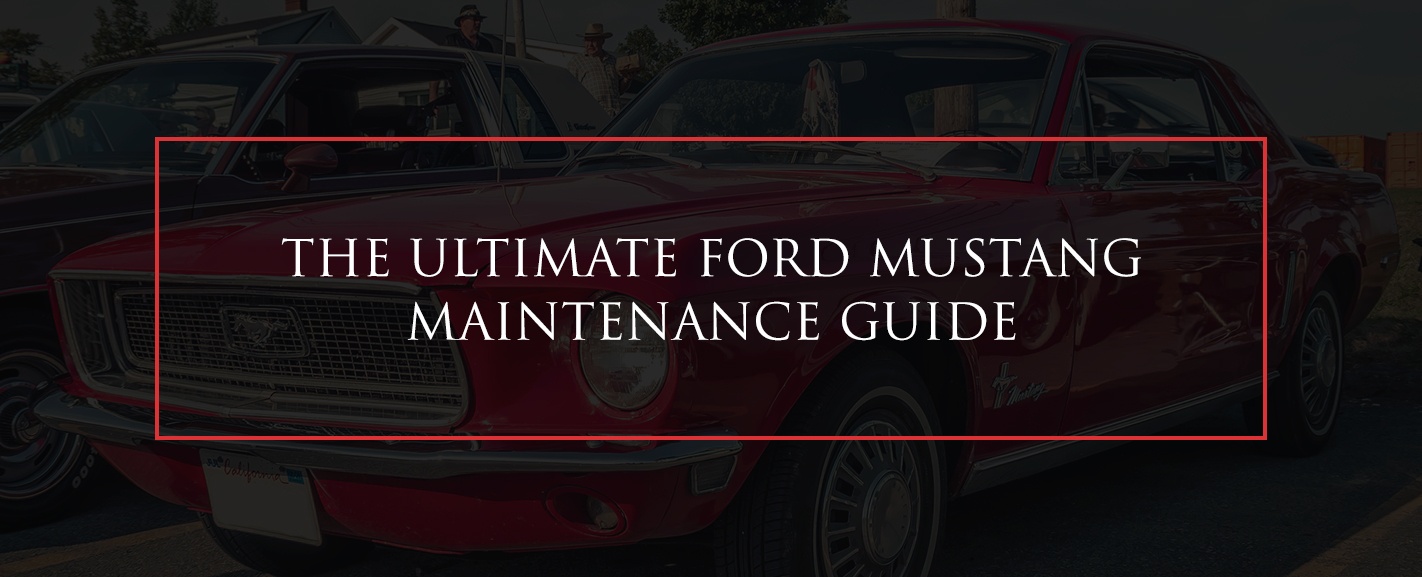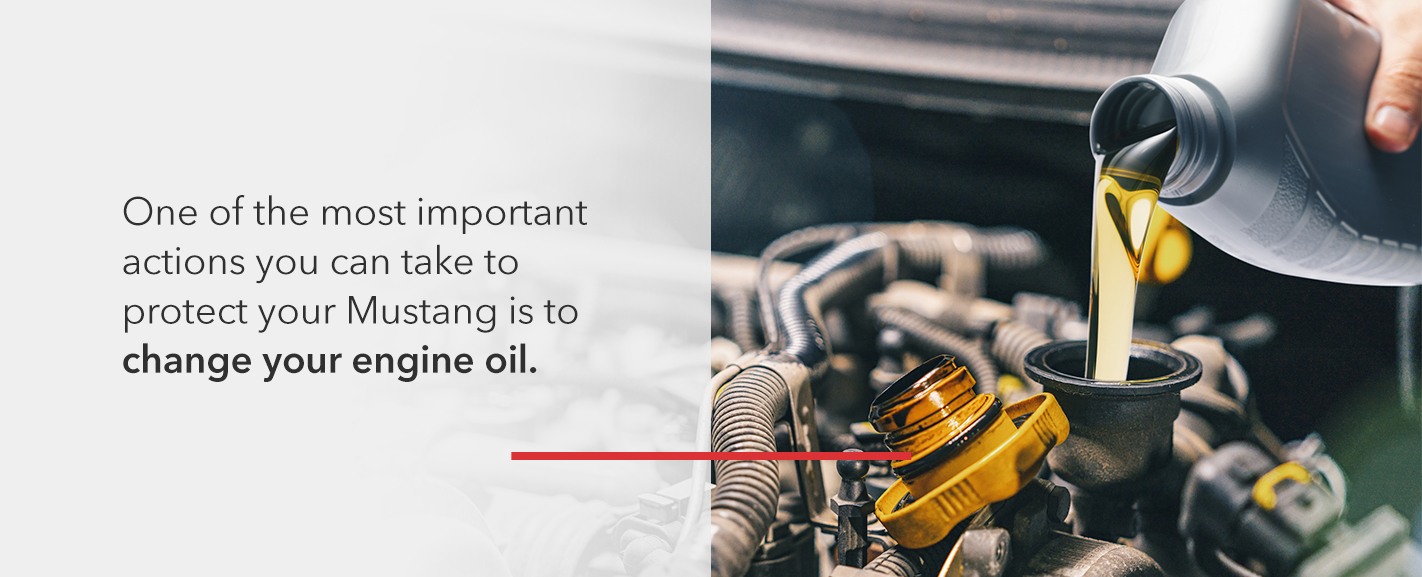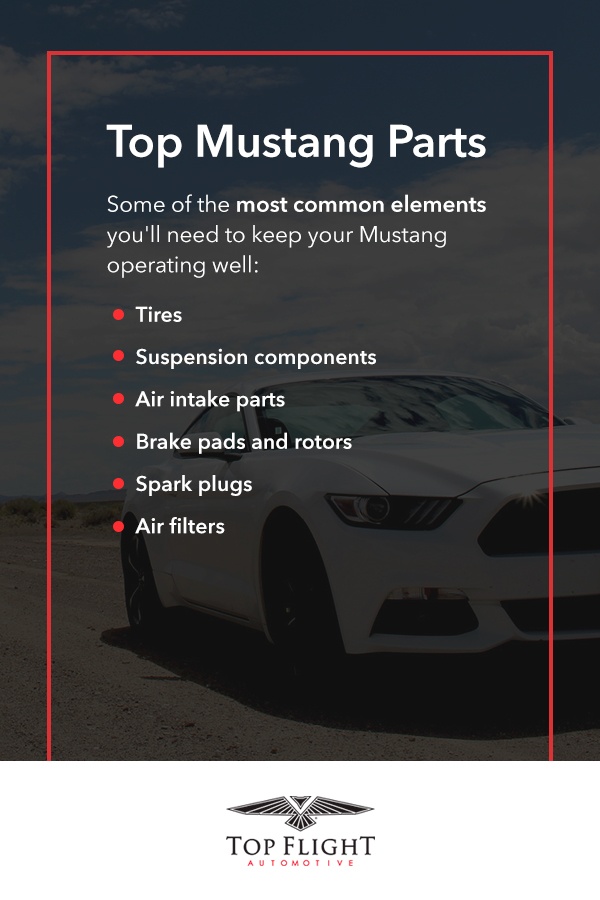
No matter the generation, properly maintaining your Ford Mustang is crucial to ensure it continues running smoothly. Instead of waiting to react to a problem with your vehicle, head off any issues by implementing a Mustang service schedule. It will keep you on track for routine maintenance and replacement of any worn or damaged parts.
We’ve created this Mustang maintenance guide to help you keep your vehicle in top shape. Throughout the guide, we’ll provide tips that are broad enough to cover all generations of Mustangs, so make sure to consult your owner’s manual for more information about the particulars of your Mustang’s service schedule.
Tips for Caring for Your Ford Mustang
Maintaining your Mustang shouldn’t be confusing or difficult. It only becomes overwhelming if you go too long without conducting routine checks and replacing parts when necessary. To care for your Mustang properly, start by implementing these tips that should apply to every generation:
1. Change Transmission Fluid
Whenever your Ford Mustang maintenance manual states you should change your transmission fluid, do so to make sure your car continues running smoothly. Look in your owner’s manual to find when it recommends you should change the fluid, as the mileage man vary by model.
For example, the 2020 Mustang Owner’s Manual recommends the car should have its transmission fluid changed at 150,0000 miles, while the 1996 Ford Mustang’s General Information manual states the fluid should be changed every 30,000 miles.
2. Lubricate Suspension Components
Suspension components, like ball joints and rods, come equipped with grease Zerks. These Zerks need to be greased anytime you take your Mustang in to be serviced — this keeps them as lubricated as possible. If you don’t lubricate your suspension components, the joints can wear down faster and lead to additional maintenance on your vehicle.

3. Change Engine Oil
One of the most important actions you can take to protect your Mustang is to change your engine oil. Most Fords have a warning system that will tell you when you need to change the oil, giving you a signal when it’s time. Get in the habit of heeding this warning sign and taking the car in as soon as you can after it turns on.
If you don’t change your oil, your Mustang’s engine will start having problems. The main issue you’ll run into is your engine running too hot, which can lead to engine components wearing out or warping. Going too long without an oil change will eventually cause your engine to shut down. If this happens, you’ll have to replace it, costing you a significant amount of money.
4. Rotate Your Tires
Although most car owners tend to not rotate their tires, you should make sure to rotate your Mustang’s wheels regularly. Many Mustang owners get their tires rotated at their regularly scheduled oil change to keep the treadwear even. Greater treadwear consistency gives drivers better handling over their Mustang, which is especially helpful when you’re on a poorly kept road.
5. Change the Brake Fluid
Brake fluid absorbs water to prevent corrosion inside your brakes. Like any other fluids, you’ll need to change it for a fresh batch at the recommended periods in your owner’s manual. Failing to change your brake fluids at the appropriate times can lead to moisture contamination, debris buildup and brake failure.
6. Diagnose Dashboard Warning Lights
If any lights on your dash come on, take your car into a shop and get it checked out. It could be nothing, but you always want to play it safe for your safety as well as your Mustang’s.
You should always take care of a malfunction indicator light (MIL), airbag light, brake warning light, antilock braking system (ABS) light or any other kind of indicator on your dash as soon as it comes on. Use your owner’s manual to familiarize yourself with what each one means.
7. Replace the Wires, Coils and Spark Plugs
Though spark plugs tend to last longer for modern-day Mustangs, you’ll still need to replace them. The more mileage your Mustang racks up, the more likely it is your spark plugs will start wearing down. A worn-down spark plug can cause a strain on the Mustang’s ignition system and waste fuel. To prevent this, periodically check for any wear on your spark plugs, replacing them as you need to.
Any spark plug check should also include wires and coils. While your coil packs will not usually need regular replacement, it’s best to be safe and inspect them. Check if the connections are still firm and have no contaminants on them. Spark plug wires don’t need to be replaced for a long time, but they should still be inspected. Keep an eye out for the condition of their insulation, ends and jackets.
8. Flush the Cooling System
Your coolant ensures your engine runs cool even when the mercury levels increase. Additionally, it provides corrosion protection for the engine’s internal components. Since the coolant significantly impacts the vehicle’s performance, it’s vital to keep up with it. Follow your owner’s manual’s recommendations for when to flush your Mustang’s coolant.
9. Clean Your Car
Besides making your car look good, cleaning it can actually offset your maintenance costs. By washing your Mustang’s exterior regularly, you can prevent dirt and grime from corroding the paint. Cleaning the interior can help you stop junk from piling up, which could potentially damage the seating or carpets over time. Regularly cleaning your car makes it look great and allows its exterior and interior to stay in top shape for longer.

10. Wax the Paint
You should try to wax your car once or twice a year in addition to cleaning it. A high-quality wax will provide extra protection for your paint. It reduces the chances of fading due to sun exposure and guards against other environmental factors that could harm your vehicle. Besides its value as a protectant, it also does an excellent job of maintaining your car’s shine, even after years of use.
11. Inspect the Tires and Check Tire Pressure
One of the simplest steps you can take to keep your Mustang running well is inspecting the tires. Begin by checking for sharp objects like nails or glass buried into it, which could cause a flat. Next, look at the valve stems to make sure they aren’t leaking. To check, you can simply move them back and forth, listening for any air leaks.
If you think there might be a slow leak in your tire, you can do a quick check to see if your suspicions are correct. One method you can use to confirm a leak is to spray the suspected area with soapy water. If you have a leak, you’ll notice large bubbles forming where the puncture is.
Along with checking for damage, you should also investigate your tire pressure. Find your owner’s manual through Ford’s site to see at which level they recommend you keep your pressure. If you don’t keep the tires at an optimal pressure, your Mustang may start to get less gas mileage and experience uneven tire wear.

Top Mustang Parts
If you plan on replacing parts yourself, you’ll need to know about the components readily available to you, no matter your Mustang’s generation. The key to proper maintenance starts with high-quality Mustang parts and products. Below you can find some of the most common elements you’ll need to keep your Mustang operating well:
- Tires: If you want your Mustang to last a long time, keeping your tires up to date is crucial. A blown tire can cause damage to various areas of your car. Update your tires by purchasing only the best models and doing your homework to see which ones will last the longest.
- Suspension components: Keep your suspension running smoothly by replacing struts and shocks to restore your suspension system to peak performance. If you decide to lower your car, you’ll also need to replace these parts to ensure top handling capability.
- Air intake parts: If you want to maintain your engine’s health, ensure there’s cool air circulating under the hood. Relying on generic air cleaner intakes can dramatically undersell your ability to get higher speeds and greater fuel economy from your engine as it ages. To get more mileage and faster speeds, go with only the best air cleaner parts, like 1965-1973 Ford Mustang air cleaner assemblies.
- Brake pads and rotors: Lacking the ability to brake can be deadly, and as such, it’s crucial to inspect and replace your brake pads consistently. You should also check your rotors to ensure your braking system stays in top shape, replacing them as needed.
- Spark plugs: The power of a Mustang’s engine is the result of a spark, fuel and air. If your spark plugs start wearing down, one of those three factors becomes weakened, which can harm a Mustang’s durability and performance. A maintenance check might reveal issues caused by worn-out spark plugs.
- Air filters: Drivers often like to push their Mustangs to the limit, and as a result, they need something more effective than the standard original equipment manufacturer (OEM) filters. To get the highest performance from your intake tract, you’ll want to replace your standard paper filter with a drop-in filter. Additionally, you can go with cold air intake for improved flow.
Ford Mustang Maintenance Schedule
To ensure you’re keeping up with all the necessary maintenance, you should develop a maintenance schedule. By setting up a schedule, you won’t overlook common issues or let your car go too long without receiving the proper tune-ups and replacements.
For most Mustangs, you’ll want to do a couple checks at every oil change interval. For example, the 1996, 2007 and 2020 Mustang owner’s manuals all recommend you should swap out the engine’s oil and filter at every oil change interval. Additionally, both the 2007 and 2020 manuals state you should rotate your tires at every oil change, while the 1996 manual recommends you do it every other time.
Create your Mustang service schedule by following the broad guidelines that apply to Mustangs. Remember to plan in conjunction with the owner’s manual to ensure you’re not missing anything specific to your model. The Mustang GT maintenance schedule might be different than the Ford Mustang Bullitt or the 1994 Mustang Convertible, for example.
To give you an idea of some of the major service intervals you should watch for, check out some of the milestones within the 2020 Mustang maintenance guide:
- Every oil change: Every time you go in for an oil change, you should measure your tires’ tread depth and the amount of wear. Additionally, inspect the automatic transmission fuel levels, brake pads, parking brake, rotors, hoses, engine cooling system strength and exhaust system. Continue the inspection by examining your universal joints, rear axles, suspension, ball joints, driveshaft, U-joints and steering linkage. Lubricate any places with grease fittings.
- 20,000 miles: At 20,000 miles, your Mustang will be ready to go past simple oil changes. Replace your cabin air filter at this service interval. Repeat this replacement at every additional 20,000 miles.
- 30,000 miles: Every time you reach an additional 30,000 miles, you’ll need to replace the engine air filter.
- 100,000 miles: At every 100,000 miles, you should inspect the Mustang’s accessory drive belts, replacing if needed. After this initial check, continue inspecting them at every other oil change, replacing them once they show signs of wear. You should also replace the spark plugs at this point.
- 150,000 miles: Every 150,000 miles you get from your Mustangs will bring a few needed actions. Start by changing your manual and automatic transmission fluid as well as your filter. Along with this, you’ll want to replace your accessory drive belts if you haven’t already and change the rear axle fluid.
- 200,000 miles: When you hit 200,000 miles, change your Mustang’s engine coolant. After this first engine coolant change, you should replace it every 100,000 miles.
If you have an earlier Mustang model, make sure to find the appropriate manual for it that describes its maintenance schedule. Though there will be some crossover between early and late models, there will likely be some discrepancies.
Ford Mustang Maintenance Cost
One of the benefits of owning a Mustang is the lower maintenance cost, with late-model Ford Mustangs being some of the most inexpensive cars you can own. The average maintenance cost of a Ford Mustang is about $979 per year. You can expect that an earlier generation Mustang will require more maintenance, leading to higher costs, while later models shouldn’t need unscheduled maintenance for quite some time.
Are Mustangs high-maintenance? The cost should indicate that they aren’t. Of course, the older the vehicle, the more likely it is you’ll have more maintenance issues to worry about. But overall, a Ford Mustang isn’t going to be particularly high-maintenance. Add high-quality replacement parts to older models, and you’ll reduce the time and money spent fixing your classic Mustang.
Choose Top Flight Automotive for Your Mustang Parts
If you’re looking for the largest selection of Mustang parts from any generation at the best prices, you’ll benefit from exploring Top Flight Automotive’s offerings. As Mustang experts, we can assist you as you look for the best components for your vehicle. Features like our price matching and fast shipping keep our customers coming back.
Browse our selection of Mustang parts from the first to the sixth generation to see what we can do for you. Looking for full catalogs of vintage Mustang parts? Check out our collector’s Ford Mustang parts catalog and other Mustang gifts. If you have any questions, contact our team of experts who will be happy to help you in your restoration or modification project.











May 17th, 2021 at 3:31 pm (#)
How great that you talk about how brake fluid prevents corrosion to take care of your brakes. I just purchased a ford mustang this summer and want to make sure the brakes are working properly. I will find a great place for brake inspection in my area.